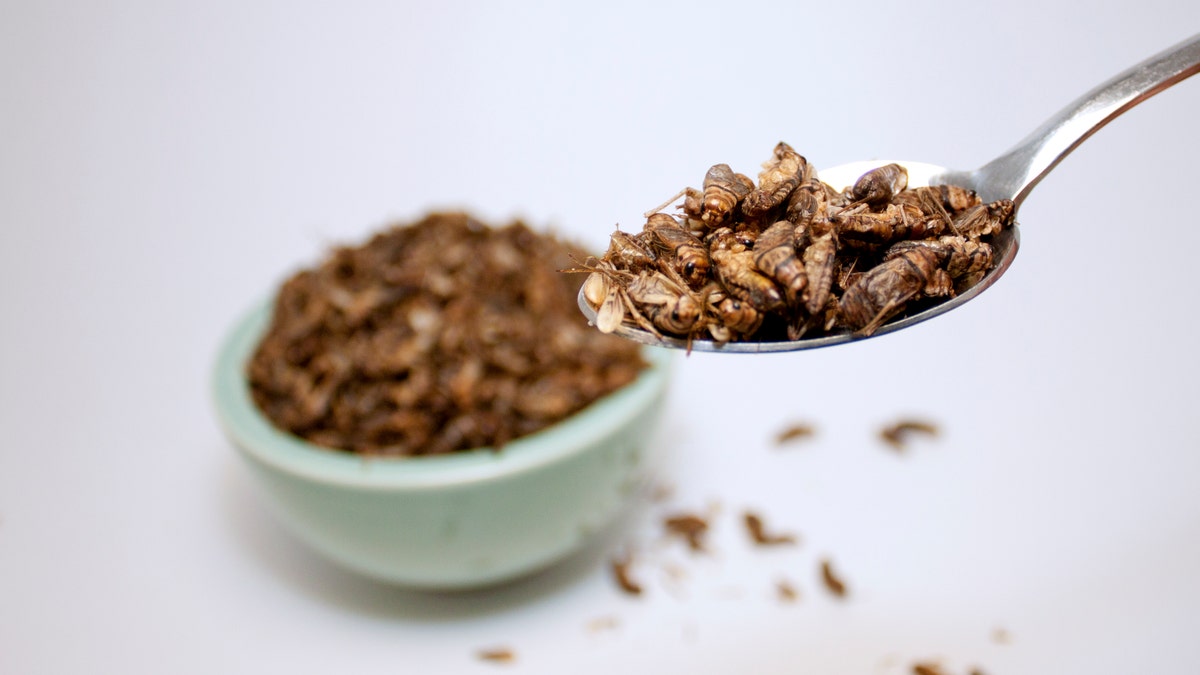
A spoonful of edible died cricket with a bowl full on cricket as background (casketcase)
Think nothing can take the place of a juicy, perfectly cooked burger? Try a plate of fried grasshoppers.
Okay, so they won't exactly taste the same—and it may be tough to even stomach the thought of munching on bugs. But experts say that nutritionally speaking, they’re a good substitute for beef, and may be a valuable food source of the future.
The idea of eating insects isn’t new. They’ve long been included in traditional diets of cultures around the world, and a 2013 report from the Food and Agriculture Organization of the United Nations noted that more than 1,900 insect species have been documented as food sources globally.
Americans aren’t so keen on consuming the critters, but bugs have crept into some Western food products in recent years. Cricket flour, for example, has become a popular ingredient in the high-protein, low-carb Paleo diet. (One tester's verdict on crickets in chocolate chip cookies? Tastes like walnuts!)
Insects have also been touted as a more sustainable alternative to eating meat and fish, especially as the global population grows. The process of raising and transporting animals as food sources—whether it’s cattle, pork, chicken, or farmed fish—produces greenhouse gases, uses water and other resources, and contributes to pollution.
There are surely more insects on Earth than there are fish in the sea or livestock on land. And it’s well known that insects are high in protein, but until now, their use as a good source of other nutrients has been unknown.
RELATED: Everything You Need to Know About the Paleo Diet
So researchers from Kings College London and Ningbo University in China set out to measure the nutrient content of various insects, to see if they really could contribute to a well-rounded meal, and measure up to Western staples like beef. The results were published this week in the Journal of Agriculture and Food Chemistry.
The study authors were particularly concerned with iron concentration in insects, since iron is an important nutrient that’s often lacking in vegetarian diets. Not absorbing enough iron from food or supplements can lead to anemia, cognitive problems, weakened immunity, pregnancy complications, and other health issues.
Using a lab model to mimic human digestion, the researchers analyzed the mineral content of grasshoppers, crickets, mealworms, and buffalo worms (oy)—along with a sample of sirloin beef—and estimated how much of each nutrient would likely be absorbed if eaten.
The insects had varying levels of different nutrients. Crickets, for example, had the highest levels of iron, calcium, and manganese. And, in fact, iron solubility (a characteristic that allows a mineral to be taken up and used by the body) was significantly higher in the insect samples than in the beef.
Grasshoppers, crickets, and mealworms also had higher concentrations of chemically available calcium, copper, zinc, and magnesium, when compared to the sirloin.
RELATED: 14 Best Vegan and Vegetarian Protein Sources
The results support the idea that eating bugs could potentially help meet the nutritional needs of the world’s growing population, the researchers concluded. “Commonly consumed insect species could be excellent sources of bioavailable iron,” they wrote, “and could provide the platform for an alternative strategy for increased mineral intake in the diet of humans.”
We’re still not 100 percent sold—but we’ve likely got some time to get used to the idea of bug-burgers as the next big thing. And as one brave volunteer in our cricket-flour protein bar taste test put it, is it really more gross than eating, say, a hot dog?
When you look at it that way, a little creepy-crawler crunch doesn’t seem so bad.